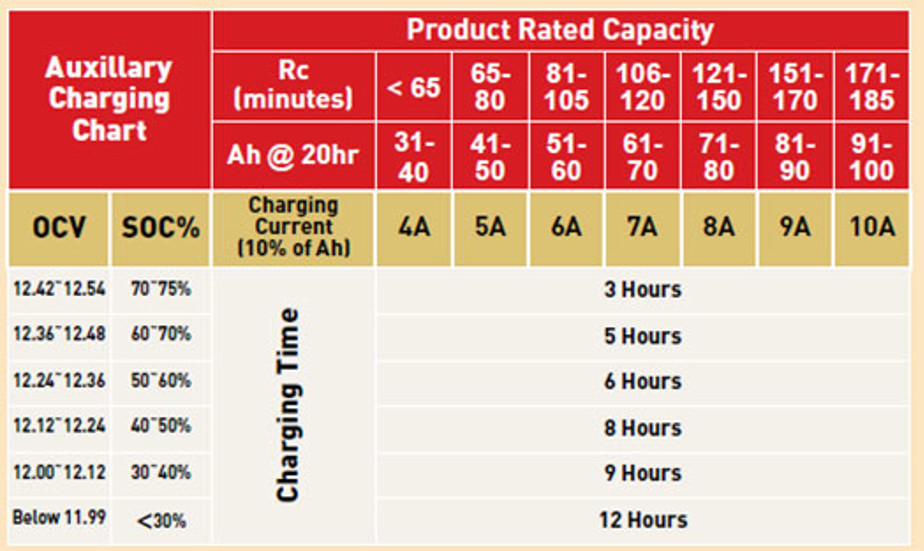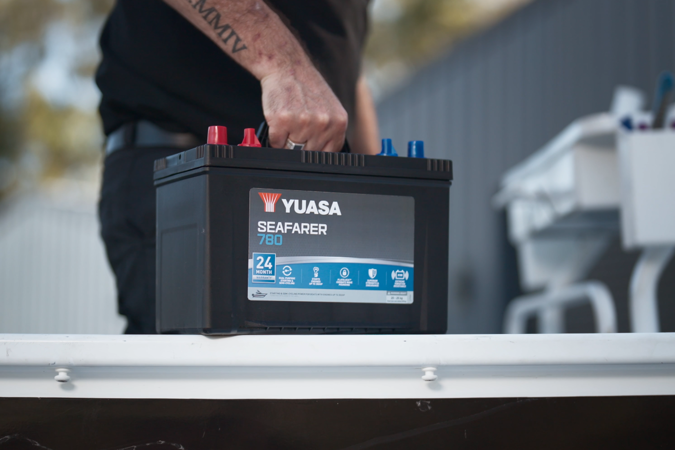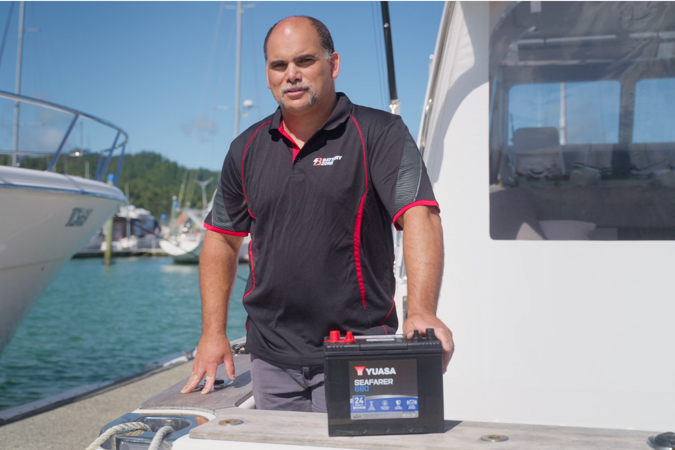
WHAT IS A DEEP CYCLE BATTERY?
A deep cycle battery is a lead-acid battery designed to be regularly discharged then recharged again. In a battery, one discharge plus one recharge equals one cycle.
WHAT IS THE DIFFERENCE BETWEEN DEEP CYCLE AND STARTING BATTERIES?
• Deep cycle batteries (marathon runners) are designed to deliver sustained power with low current draw over extended periods of time
• Starting batteries (sprinters) are specially designed to start the engine, work as a voltage stabiliser and run accessories when the engine is not running
GRID DIFFERENCES BETWEEN DEEP CYCLE AND STARTING BATTERIES
Deep cycle batteries have thicker plates to handle deeper discharges, different grid patterns to improve current flow, higher density paste to increase cycle life and use different grid compositions depending on battery type (AGM, flooded or gel) to maximise service life.
WHAT IS DEPTH OF DISCHARGE (DOD)?
DOD is the amount of energy that has been removed from the battery, which is expressed as a percentage of the total capacity of the battery. For example, 50% DOD means that half of the energy in the battery has been used. 80% DOD means that 80% of the energy has been discharged so the battery now holds only 20% of its full capacity.
BATTERY TIP 1 - Select a deep cycle battery that suits the environment!
When choosing a deep cycle battery, many consumers focus on the price, physical size, weight or capacity of the product, without taking into consideration where the battery is located in the application.
• Near sensitive electronics - use a Yuasa AGM or SMF flooded battery. Avoid using maintainable batteries as the higher gassing rates can corrode and damage the electrics in the application.
• In confined spaces - use a Yuasa AGM or SMF flooded battery. Avoid using maintainable batteries as they can be difficult to check the fluid levels and may fail prematurely due to lack of maintenance.
• Under seats and sleeping areas - use a Yuasa AGM or SMF flooded battery. Hydrogen and oxygen gas produced from maintainable batteries can be damaging to your lungs and respiratory system when inhaled.
• When fitted under the bonnet - use a Yuasa maintainable/SMF flooded battery.
BATTERY TIP 2 - Regularly check the state of charge in your battery!
When the battery is not in use, recharge it if the open circuit voltage (OCV) drops below 12.5 volts. Deep cycle batteries are not designed to be kept in a low state of charge and will build up sulphation on the battery plates that will reduce the performance and cycle life of the battery.
BATTERY TIP 3 - Do not overfill maintainable deep cycle batteries!
If you have a maintainable battery, it’s important to check if the battery has sufficient electrolyte covering the battery plates. If topping up is required, do not over fill when the battery is discharged as the fluid levels will rise when the battery is charged and may overflow. Top up using distilled or demineralised water and never fill with sulphuric acid. When the battery is fully charged, fill to the bottom of the spout extensions.
BATTERY TIP 4 - Never fully discharge a deep cycle lead acid battery!
The deeper you discharge the battery the more it will reduce the battery’s total cycle life. We recommend discharging a battery to no lower than 50% DOD, with a maximum of 80%. If you discharge the battery to 50% of its capacity instead of 100%, the battery will produce an extra 40% more amperes over the life of the battery.
BATTERY TIP 5 - Always ensure the charging settings match the battery!
Charging Current (Amps)
Recommended charging parameters for lead acid battery types:
• Flooded batteries: 10% of the battery’s Ah rating (100ah = 10 amp charging current)
• AGM & Gel batteries: 20% of the battery’s Ah rating (100ah = 20 amp charging current)

Voltage settings are measured at 25-degrees:
• The bulk and float charging voltages play a key part in battery performance and longevity.
• If the charging voltage is too high for the battery type, you risk overcharging the battery.
• If the charging voltage is too low for the battery type, you risk undercharging the battery.

• It takes 40% of the total charging time to recharge the last 20% of the battery, and this is the most important stage to remove built up sulphation and improve the battery’s performance and service life.
• Fast chargers and preset absorption times on smart chargers may not provide enough time to fully charge the battery and may require a second charge.
• The chart below provides a good guide, explaining what sized charger is needed for the capacity of the battery, and, depending on the battery’s state of charge (SOC), how long it will take to charge the battery.

Make sure the DC-DC charging settings match the battery. The incorrect setting can cause the battery to use excessive amounts of water causing leakage and over or undercharge the battery resulting in early battery failure.
BATTERY TIP 6 - Never add or replace only one battery in a battery bank!
• When connecting batteries, it’s important to check the batteries are the same age, capacity (size), make/type and voltage.
• Electrical energy will take the shortest path. Every battery has a slightly different internal resistance. When you mix batteries with large variances in internal resistance will result in inefficient charging, reduced battery life and performance.
• Don’t mix batteries of different sizes. When you mix batteries of different sizes and capacities this creates an unbalance in charging and will overcharge one battery and undercharge the other.
BATTERY TIP 7 - Always ensure the leads are correctly fitted to the batteries!
Always ensure when connecting any electrical loads to 12V parallel battery banks, the cabling is attached so that the load is shared evenly across the whole bank.
 Homepage
Homepage


